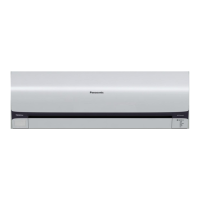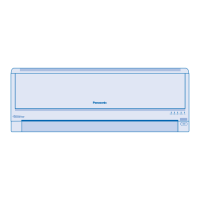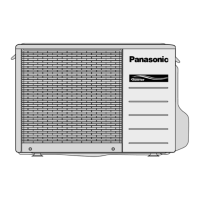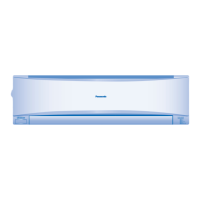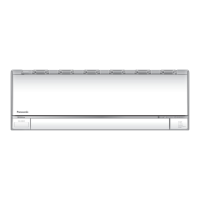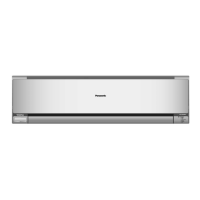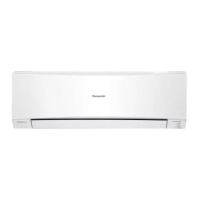83
13.4 Airflow Direction
• There are two types of airflow, vertical airflow (directed by horizontal vane) and horizontal airflow (directed by
vertical vanes).
• Control of airflow direction can be automatic (angles of direction is determined by operation mode, heat
exchanger temperature and intake air temperature) and manual (angles of direction can be adjusted using
remote control).
13.4.1 Vertical Airflow
CS-E7PKEW CS-E9PKEW CS-E12PKEW CS-E15PKEW
Upper Vane Angle (°) Lower Vane Angle (°)
Operation Mode Airflow Direction
1 2 3 4 5 1 2 3 4 5
A 25 17
B 55 37
Auto with Heat
Exchanger
Temperature
C 25 17
Summer House 55 37
Heating
Manual 20 45 55 65 70 17 27 37 47 56
Auto 45 ~ 70 2 ~ 39
Cooling
Manual 20 25 50 55 70 2 7 17 27 39
Auto 45 ~ 70 2 ~ 39
Soft Dry
Manual 20 25 50 55 70 2 7 17 27 39
CS-E18PKEW CS-E21PKEW CS-E24PKES CS-E28PKES
Upper Vane Angle (°) Lower Vane Angle (°)
Operation Mode Airflow Direction
1 2 3 4 5 1 2 3 4 5
A 25 17
B 55 32
Auto with Heat
Exchanger
Temperature
C 25 17
Summer House 55 37
Heating
Manual 20 45 55 65 70 17 25 32 42 55
Auto 45 ~ 70 2 ~ 36
Cooling
Manual 20 25 50 55 70 2 8 18 27 36
Auto 45 ~ 70 2 ~ 36
Soft Dry
Manual 20 25 50 55 70 2 8 18 27 36
1. Automatic vertical airflow direction can be set using remote control; the vane swings up and down within the
angles as stated above. For heating mode operation, the angle of the vane depends on the indoor heat
exchanger temperature as Figure 1 below. It does not swing during fan motor stop. When the air conditioner is
stopped using remote control, the vane will shift to close position.
2. Manual vertical airflow direction can be set using remote control; the angles of the vane are as stated above and
the positions of the vane are as Figure 2 below. When the air conditioner is stopped using remote control, the
vane will shift to close position.
58°
